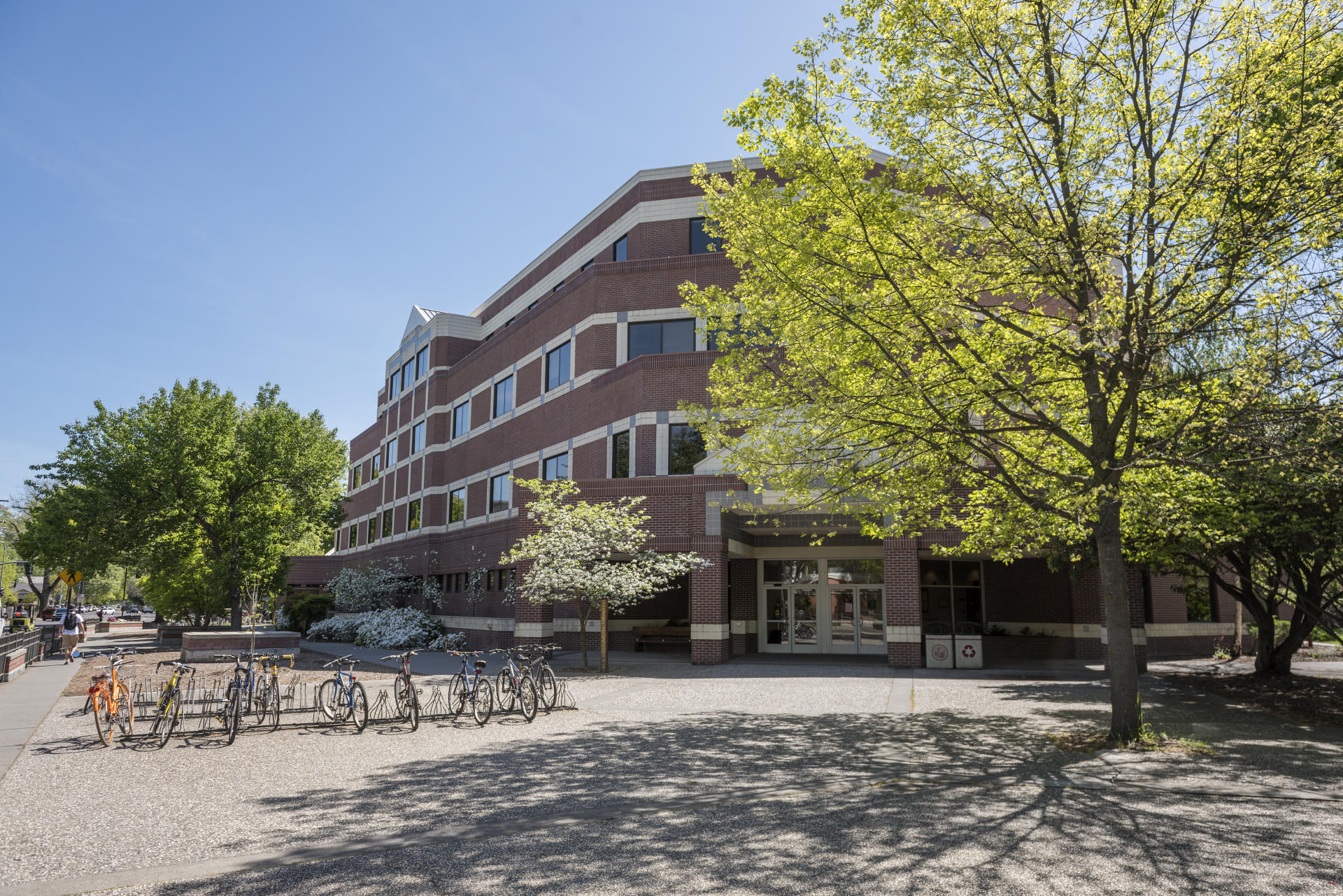Adapting to the Virtual Classroom

Bike racks near the north end of O’Connell Technology Center on Friday, April 13, 2018 in Chico, Calif. (Jason Halley/University Photographer/CSU Chico)
By Kevin Taylor, professor of computer animation and game development
There was no way to prepare for the sudden turmoil of current events. As I readied for the spring semester, never had I imagined that I would be conferencing and teaching in my pajamas.
It’s not easy teaching 100 students on creative and technical animation techniques from my couch or makeshift office. But it’s where we are, each trying to make the most of it. For the last few weeks, we have cobbled together a course that works for all of us, with a free flow of questions and answers between students and myself. Even over an application, it has felt like we’ve managed to keep the positive, engaging classroom spirit alive.
It feels like a major victory and a world away from when news of the coronavirus sprang up prior to spring break. Among my students, the idea of having their semester disrupted created an atmosphere of agitation. It initially interrupted the focus on our exercises and turned the once-lively engagement and discourse somber.
I worked to keep students up to date and ensure that they knew any University response was based on their health and well-being. Following the announcement of the suspension of in-person classes, our department met immediately to discuss our strategy, and shared tools and ideas for effective online teaching of complicated content. There was some relief that, due to the technical nature of our program, our students would be somewhat prepared to meet the challenges we anticipated—and, hopefully, those that we couldn’t.
Many students were concerned it would be too hard to engage in an artistic class online or had grown fond of myself and their peers. They were saddened at the prospect of learning alone without the discussions that had been a classroom staple.
I assured them I’d work to deliver the best possible educational experience I could, changing assignments and deadlines to ensure that remote assignments could run smoothly, without sacrificing the all-important learning outcomes required to advance within our program.
With students returning home, I held a question-and-answer session to get a sense of how they felt they would do with a remote course and any problems they might encounter. My classroom has a lot of first-generation students, like I was, and many voiced concerns about scheduling and sharing a household with siblings who would need the computer for study. Poor internet connectivity was also a factor, and after investigating streaming classroom options, I opted for a heavier revision of the learning environment.
I record lectures, task outlines, and various introductions and post them openly to YouTube, so students can watch any time on a computer or smartphone. Classroom discourse and collective learning remain a priority, and I developed a virtual classroom on the Discord application. Here, students can drop by during class hours to find me ready to answer any questions by text or voice chat, with an open forum where students can ask questions and post at any time.
To ensure students feel reassured and supported, and that our learning space was still a place of enjoyment, I record my videos with a game theme, dressing up as a game character for the video introductions of my lectures before moving into more serious content. Students seem to appreciate this effort to keep morale high, likely enjoying their professor looking somewhat silly.
I was concerned with how well the students would be able to engage, even if their academic needs were being met. I’ve provided written notes and recorded lectures, as well as some aspects of the creative application of technical content that my students struggled to grasp and apply outside of the classroom setting. This requires additional one-on-one discussion and video conferencing that has seen me alter my approach to delivering online content of this nature. Some students who struggled in the physical classroom have continued to do so in the virtual, and I strive to provide as much individual support as I can offer.
To my delight, the majority of the students are active, inquisitive, and engaged. They utilize forums for uploading images of their work, and it seems no one feels unable to tackle this new remote educational challenge. When issues arise, mostly around the conveyance of concepts or principles that are more difficult to convey remotely, I—and many others—work to assist.
Students who had been relative unknowns or shy in person are now actively seeking answers and confidently supporting their classmates with advice and information on everything from assignment criteria to technical support.
Without a set classroom schedule, I find myself answering student questions anywhere from 7 a.m. to 11 p.m. But, thankfully, this open forum has student assistance, with many expressing an overall comfort with remote discussions as they now engage with friends and contacts internationally on a near-daily basis through similar technical mediums.
This process has brought many arduous, sometimes frustrating, challenges. But it has been wholly rewarding to see my students adapt to working through these historic events, while doing so with the good-natured support of their peers. They’ve gone above and beyond my expectations and made this trying time a little less concerning and more uplifting. If I needed any more reason to be proud of my students, then this was certainly it.

Kevin Taylor is a professor of computer animation and game development nearing his second year as tenure track faculty. He has taught at institutions in the United Kingdom, Australia, and United States, and created 3D work for publishers such as Lucas Arts, SEGA, Konami, Bethesda Softworks, Activision, and others on video game titles. His research interests include transmedia narrative, and how augmented and virtual reality technologies can advance the storytelling medium. He has been published in comic books and contributed to published work on the cultural impact of video gaming.


